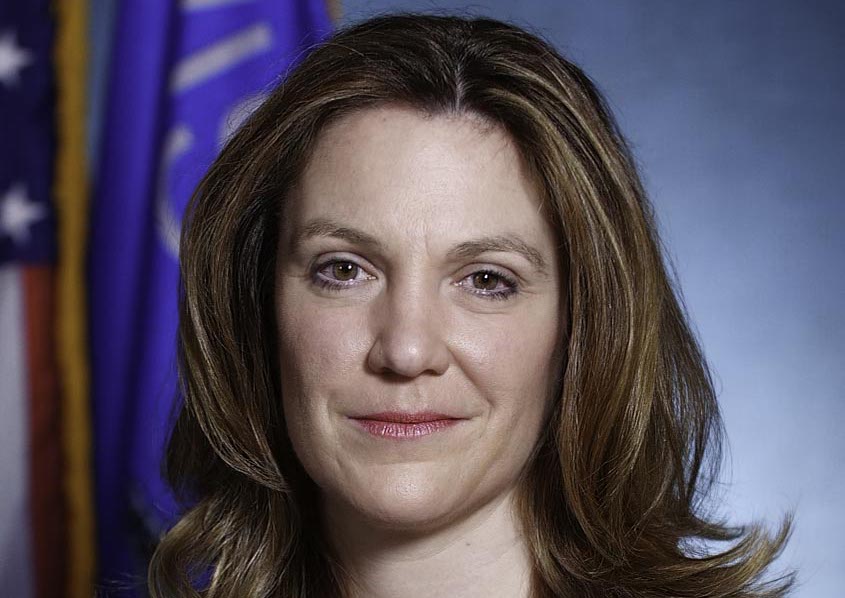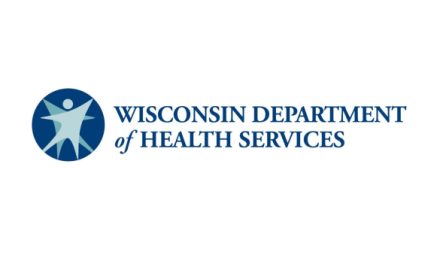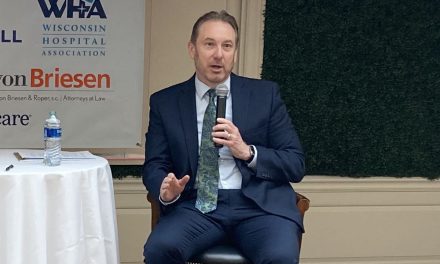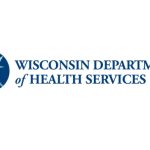
Palm explains Badger Bounce Back plan

Department of Health Services Secretary-designee Andrea Palm detailed the state’s contact tracing and COVID-19 testing efforts during a Thursday Wisconsin Health News webinar. Edited excerpts are below.
WHN: What is DHS doing to build up contact tracing efforts?
Andrea Palm: When we think about what the difference between a normal communicable disease outbreak, or sexually transmitted diseases, tuberculosis, the kinds of communicable diseases that local public health deals with on a daily basis, when you think about that and its difference to what we’re facing now, you understand very quickly that the kind of contact tracing we are going to need to do relative to what we’re used to doing is super sized. It’s on steroids. It’s a totally different frame, totally different level.
And so when we think about this at the state, we think about it in two ways. One is, we’re in this spot right now and our infrastructure is not big enough across the state to handle the contact tracing that we’re going to do in the near term. And so what is it that we as a state can do to supplement local public health departments in a surge capacity kind of way? And that’s what you’ve seen us doing over the last month to six weeks, by bringing on additional contact tracers, redeploying state employees, training them, pushing them to local public health, maybe around an outbreak, for example, in Milwaukee or in Brown County like we’re seeing right now. As we’re getting from here to a more sustainable system where we’ve got a larger infrastructure to do the kind of contact tracing we need to do over the longer term until we’ve got a vaccine or medical treatment that works, what is the surge capacity look like that we need to have immediately? So that’s some of what you’re seeing right now as we work on a plan with local public health to do this in a more sustainable, long-term, larger way. And that includes reaching our goal of 1,000 contact tracers for the state as well as the kinds of technologies we will need to have in place with that kind of contact tracing.
If you’re thinking about an army of 1,000 people, and the communication that’s required to make sure that local public health, the provider who is treating that patient, the data-tracking and transparency that we’re trying to do at the state level, the connections with needed social services, with needed isolation, all of those things have got to be in play. There’s got to be a way for that information to move so that we can really do the battle we need to do with this virus. So this is a manpower solution as well as a technology solution.
WHN: How far are we away from that point?
AP: Because this is a really important partnership between us and local public health, it’s different in different parts of the state depending on the infrastructure they already have in place because they’ve been doing this work and it is nuts-and-bolts work they do everyday. We are in close communication to understand where they are, where they think they need to get to, how that fits in with the broader 1,000, so that we can make sure that we are hiring and surging in ways that raise all boats, so we’ve got the coverage we need to have statewide. I think we are very actively in those discussions with local public health. We are very actively at the State Emergency Operations Center building the team and the plan to execute in the short term. We are actively in conversations with a number of technology vendors to try and figure out the solution that will be helpful to the state as a whole. We do intend to have more to say publicly here in the next five to seven days so that people have better visibility on this. But I think we are on track to meet our goal. It is something we intend to be super transparent about so people can hold us accountable and track along with us.
WHN: Are we going to see contact tracing apps? How are you weighing privacy concerns?
AP: That’s a big and important conversation. The backbone of contact tracing in the state of Wisconsin is what people I’m sure have become familiar with as the (Wisconsin Electronic Disease Surveillance) System. It is where this data lives. It is how it’s all connected together. It is where the communicable disease that is a reportable condition, that’s where it goes. COVID-19 is a reportable condition. So it is a backbone piece of technology. So what we have been assessing is what kind of additional functionality does it need to have? What are the options to do those things, how do they integrate, what is the public-facing piece of that, so that folks who are in isolation, who are positive or who are close contacts, how do we make that user-friendly so that you can do a daily check-in with somebody who’s in isolation or somebody who’s waiting for a test result to come back? How do we think through all of those pieces so that we’ve got a technology system that allows us to do this as efficiently as we can?
We as a state and a leadership team are very concerned about these privacy issues. There are functionalities that track us on our phones now. People know a lot more about me than I want them to know about me. But have I tossed that app in the trash? Maybe not, even though I know they’re sucking more information out of my phone than I’d like them to. But there are also functionalities that are more opt in as opposed to opt out, which is a lot of what you see currently in the marketplace. We are looking carefully at those things.
WHN: So far the state is using only about one quarter of its daily testing capacity, which is now up to more 11,000. What’s the hold up?
AP: We have to get to that full capacity and we’ve got to go beyond there because we need to understand the prevalence of this disease in a way that allows us to wrap around it and keep outbreaks small and keep the disease from spreading. When you turn the dial, and people start to have more interactions with each other, you’ve got to have the ability to get to a positive case and all suspected cases as quickly as possible. And testing is a fundamental tool again with the wrap of contact tracing to do that. And so we’ve got to get 12,000 tests a day. We’ve probably got to get beyond that. But we have set this initial goal of 85,000 tests a week, about 12,000 tests a day.
And some of what we’re seeing in the ramp – we went from zero in early March to 11,000 where we are now. We have made tremendous strides in our capacity and that is a big tribute to the clinical labs in this state as well as our private sector partners, including Exact Sciences and Promega and Marshfield Clinic. So people have really risen to the challenge of knowing that for the state of Wisconsin, we have got to have adequate testing capacity. So we have ramped really fast. It’s something the state should be proud of. We have done a really good job in this space.
And I think we’ve ramped faster than people expected and so now everybody’s like, ‘Oh there’s tests. We need to use the test.’ So we have pivoted in the last couple of weeks to expand the guidelines for testing. Everybody who has symptoms should get the test, which is different than where we were not that long ago where we were focusing on hospitalized people, those who were at most risk of severe disease. Now we’ve pivoted to this place where there is availability…
What we’ve really done is shifted from a very clinical and diagnostic use of testing to a public health scheme. This is the time where we really understand the difference between clinical medicine and public health. In clinical medicine, you test somebody if the test tells you how to treat them. In COVID-19, there’s no treatment. So it’s totally different frame for why we do testing. We do testing so we can do contact tracing and prevent spread. So we’ve got to get to a place where we’re really marrying our healthcare system with our public health strategies. Because the public health strategies are all we have until we’ve got treatment or a vaccine. So expanding the guidelines is one way of doing that.
Expanding community testing through our resources in partnership with local health systems but also using our National Guard teams. We went from three teams to 11 teams in the last week. Eight of them are on the ground now. We will continue to scale that up to be a supplement, to train the trainers, technical assistance, actual specimen collection. But we will use those teams to help this state expand and build capacity to do community testing on the scale that it needs to get done. We will max our capacity and we will do our best to keep growing it.
WHN: What are the challenges?
AP: Supply chain continues to be an issue, reagents. But we have worked really hard, not only to expand our capacity, but to expand the diversity of the kinds of platforms that are in use to run these tests, so that we spread out the kind of ingredients that are necessary. So if we see a shortage in one area, we have a variety of other platforms that use different ingredients. So we can mitigate some of these issues.
WHN: What could summer in Wisconsin look like? What’s the best case and worst case scenario?
AP: This virus very clearly has its own agenda, its own mind about this. And we in real time are chasing and tracking and understanding what the reality is on the ground here, what we can learn from the experiences of others around the country and around the world and how their trajectories may be similar to ours, how their strategies worked and didn’t work, and what learnings we can take from all of this to do our best here in Wisconsin to protect the people of the state and to allow us as quickly as is safe to return to some semblance of normalcy.
Generally speaking the frame that’s in Badger Bounce Back for phase one, phase two and phase three gives some rough parameters of how folks can think about, what the kinds of things are that are included in those various phases.
But it is certainly safe to say, absent a vaccine and treatment, that for example, mass gatherings are just going to be risky because the virus is going to continue to circulate. And the point of adequate testing and contact tracing is so that you can quickly wraparound a small outbreak before it becomes bigger. But the more people you expose in mass gathering and large settings, the more people it could spread to. So people I think need to appreciate that this continues to be a highly infectious disease. It continues to transmit asymptomatically. And so this is absolutely a turning of the dial and a phasing in of increased social interaction in a way that allows us to build the tools that we need to build to stop the spread. But also, until there’s a vaccine or treatment that works, there’s nothing stopping the spread other than our own behaviors and the way we behave in this situation. So social distancing, physical distancing continue to be the main tools that we will have.
WHN: A big part of the gating criteria is a 14-day downward trend in positive cases as a percentage of total tests. Can you describe what that means and where we are?
AP: It is designed to be a rolling 14-day trendline. And our goal is to smooth out spikes, either up spikes or down spikes from day to day. We don’t want to set ourselves up in a place where one day can knock the 14 days and there you are starting all over again. We want this to be a trend, but it’s got to be a trend over a time because that’s when you can feel some confidence that it is actually going in the right direction. So a 14-day downward trend that is statistically significant is what the national experts, it’s what the White House, it’s what a variety of folks that we consulted with were comfortable with as a way to understand that we’re moving in the right direction.
That trend is an indication of the spread of the disease. And if we are going in the right direction, we are doing the things that we need to do to protect the state and the people of this state from a potential surge. Because our social distancing, our containment measures, our mitigation measures are helping us keep it going in the right direction.
So thus far, we are not seeing a downward trajectory in the 14-day cases as a percent of total tests. But obviously we will keep watching it. It is on the Badger Bounce Back web section of our COVID pages, so people can watch along with us. This is another one that folks need to appreciate. As people have been really vigilant about safer-at-home and worked really hard to flatten the curve, this is the metric where it really shows up, how flat we’re making the curve, because that’s where the trajectory needs to head if we are all continuing to be real vigilant, continuing to do the things we need to do to reduce the spread of this virus. That metric right there is a real critical one for us to understand how we’re doing as a state in stopping the spread.
WHN: Where is that trend right now?
AP: It’s pretty flat, and actually it’s been pretty flat for a while. We’ve bumped around 8 to 11 percent, 9 to 11 percent of total tests being positive. So it’s been pretty flat for a while. And some of that speaks to the fact that compared to other states, our safer-at-home order allowed more businesses to remain open. It put more businesses in the essential category, et cetera. So we did some things at the front end that we while we were flattening the curve were more loose than other states. We’ve got to continue to be vigilant…how are we working together to reduce our interactions in the frame where we are now so we can all help to move that trajectory in the right direction.
Wisconsin Health News is removing the password on all stories related to the coronavirus. For the latest developments follow us on Twitter at @wihealthnews or check out our website. For complete healthcare coverage, sign up for a free trial to our daily email newsletter.





